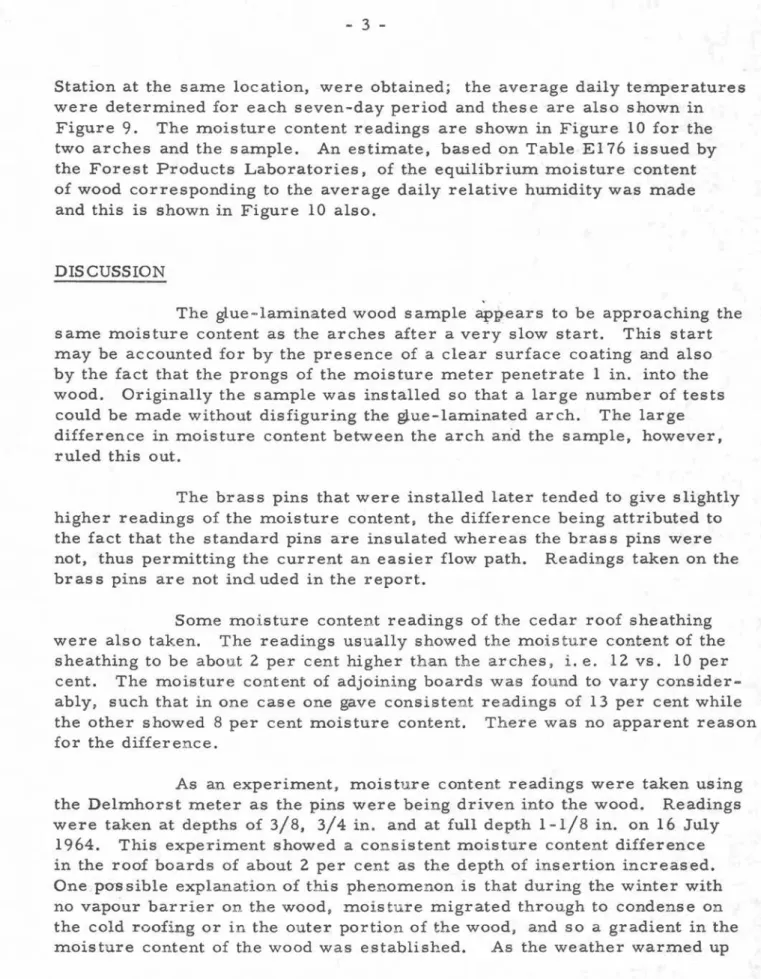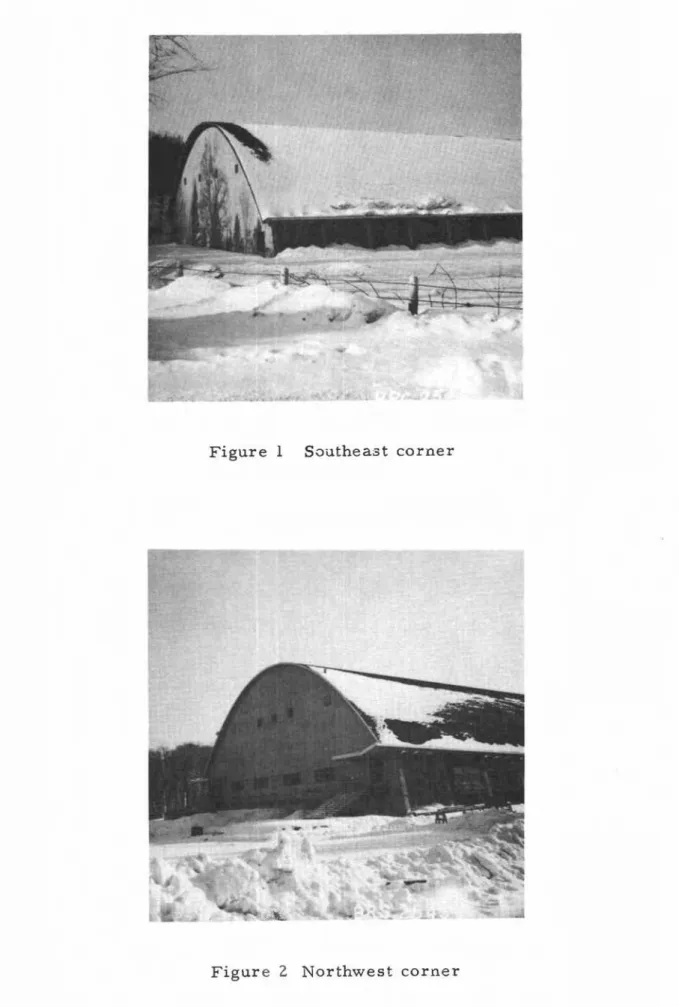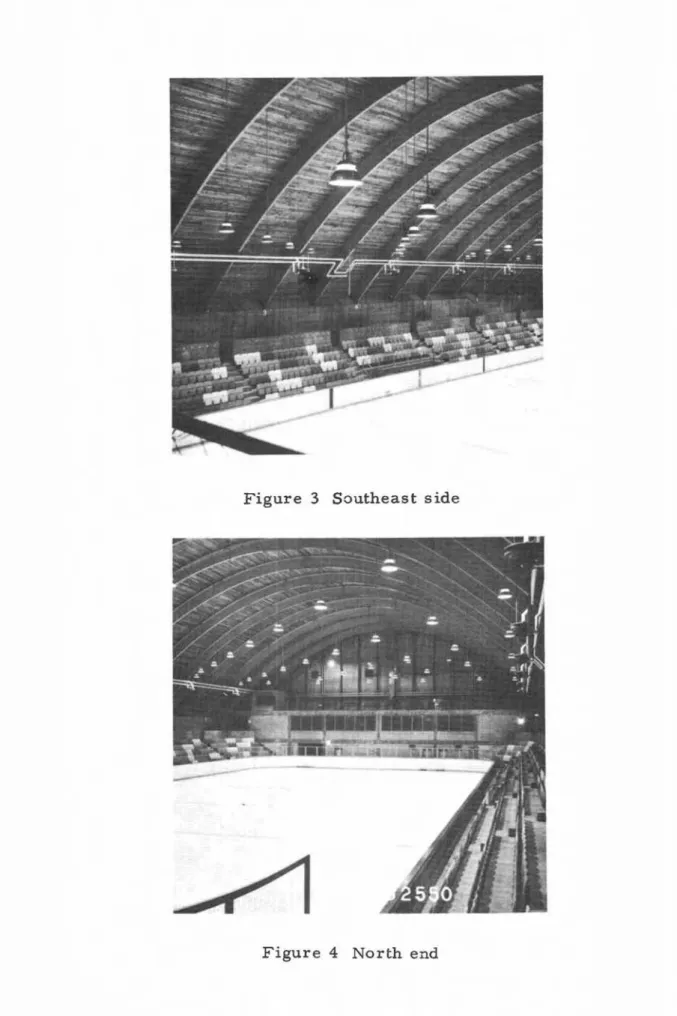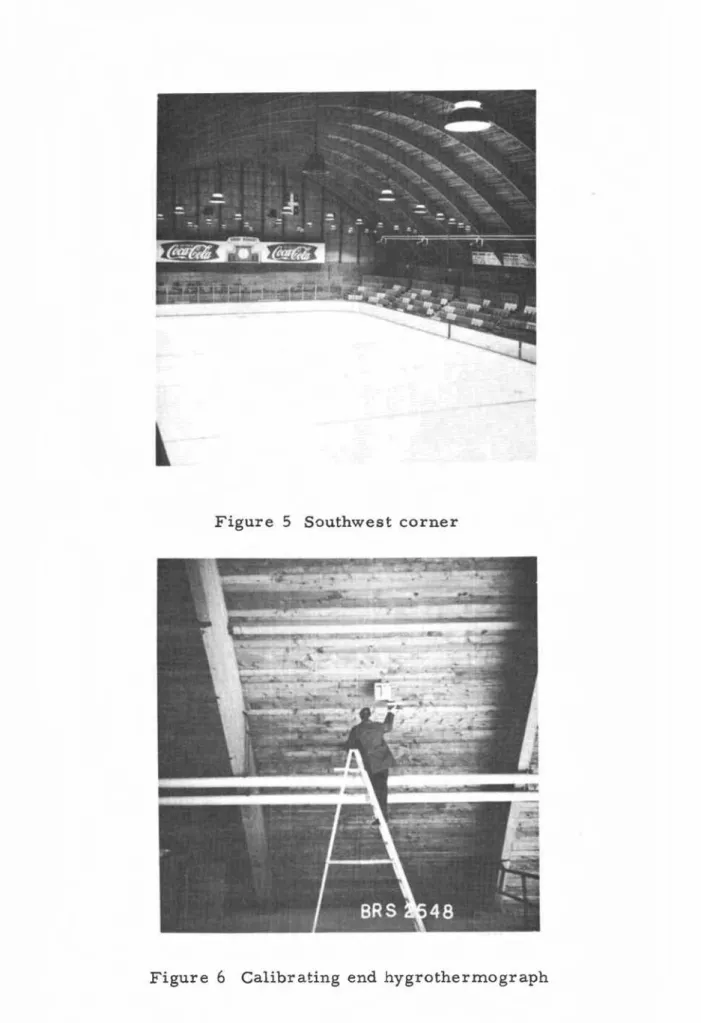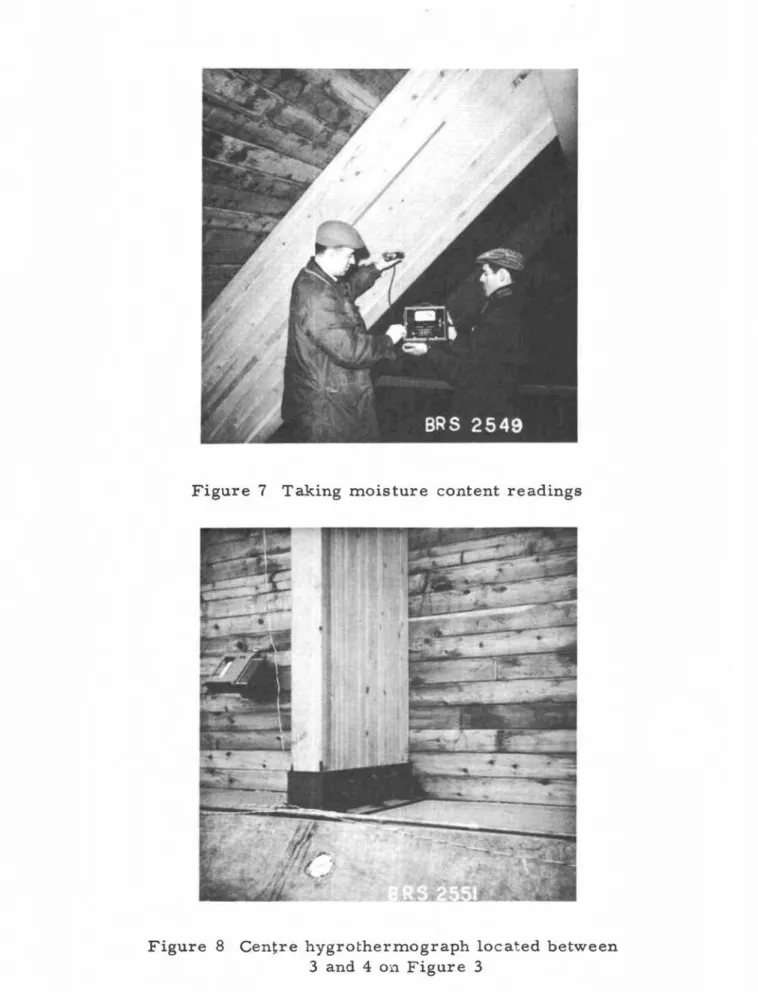Publisher’s version / Version de l'éditeur:
Technical Note (National Research Council of Canada. Division of Building Research), 1965-07-01
READ THESE TERMS AND CONDITIONS CAREFULLY BEFORE USING THIS WEBSITE. https://nrc-publications.canada.ca/eng/copyright
Vous avez des questions? Nous pouvons vous aider. Pour communiquer directement avec un auteur, consultez la première page de la revue dans laquelle son article a été publié afin de trouver ses coordonnées. Si vous n’arrivez pas à les repérer, communiquez avec nous à PublicationsArchive-ArchivesPublications@nrc-cnrc.gc.ca.
Questions? Contact the NRC Publications Archive team at
PublicationsArchive-ArchivesPublications@nrc-cnrc.gc.ca. If you wish to email the authors directly, please see the first page of the publication for their contact information.
NRC Publications Archive
Archives des publications du CNRC
For the publisher’s version, please access the DOI link below./ Pour consulter la version de l’éditeur, utilisez le lien DOI ci-dessous.
https://doi.org/10.4224/20354698
Access and use of this website and the material on it are subject to the Terms and Conditions set forth at
Moisture Content of Wooden Arches in an Arena
Beach, R. K.
https://publications-cnrc.canada.ca/fra/droits
L’accès à ce site Web et l’utilisation de son contenu sont assujettis aux conditions présentées dans le site LISEZ CES CONDITIONS ATTENTIVEMENT AVANT D’UTILISER CE SITE WEB.
NRC Publications Record / Notice d'Archives des publications de CNRC: https://nrc-publications.canada.ca/eng/view/object/?id=a6c17305-bddd-4489-b15f-23c80e934c1b https://publications-cnrc.canada.ca/fra/voir/objet/?id=a6c17305-bddd-4489-b15f-23c80e934c1b
DIVISION OF BUILDING RESEARCH
NATIONAL RESEARCH COUNCIL OF CANADA
'fE
C
1HIN ][ CAlL
NOTlE
No.
445e
PREPARED BY R. K. Beach CHECKED BY C. R. C. APPROVED BY N. B. H.PREPARED FOR Inquiry or record purposes
July 1965
SUBJECT MOISTURE CONTENT OF WOODEN ARCHES IN AN ARENA
In the late fall of 1963, Mr. B. Argent of the Canadian Institute of Timber Construction proposed that the Division of Building Research assist in a study to measure the moisture content of the glue-laminated wooden arches and record the temperature and humidity in a
heated arena. The primary purpose of the CITC was to obtain information
that would clarify the relationship between the moisture content of the wood and the environmental conditions, and so indicate whether this type of building really belongs in the group of buildings included in the National
Bu.ilding Code as having wet service conditions. Such a study was also
of inter est to the Division, and as it was believed that the Division would obtain useful information that would help to establish the relationship of these factors in this and other types of rinks such as curling rinks, the proposal was accepted.
The arena selected for the study was located in Rigaud,
Quebec, 80 miles east of Ottawa. Photographs of the arena are shown in
Figures 1 to 8. The rink is regulation size, 85 by 200 ft, and the over -all
dimensions of the building are about 128 by 246 ft. The roof deck is of
nominal 4 x 6-in. tongue-and-groove cedar spanning between the glue-laminated arches 15 ft 3 in. on centr es.
The rink is heated by a hot water system with seven projection units on each side of the rink and three over the balcony, each having a
capacity of 115, 000 Btu/hr. The units over the balcony ar e controlled by
a single thermostat while four thermostats control the units on each side of the rink.
..
2
-The rink is equipped with a ventilation system consisting of four fresh air intakes at the south end and three exhaust fans at the north
end. The exhaust fans have a capacity of 11,800 CFM each and are
con-trolled by a single manual switch. The fresh air intakes are equipped
with motorized dampers that open when the exhaust fans are started. The building was built in 1963 and was in operation when
first visited in late November 1963. At first the exhaust fans were operated
regularly each hour, but as there did not seem to be any real advantage in this it was changed and the fans were only turned on when the rink was
fully occupied or had been in use for some time. Originally the heating
system was controlled automatically by the thermostats so that the air
temperature was maintained at about 500
F. This procedure was followed
during the very cold weather but as the weather warmed up the heating system would be shut off and turned on only when the rink was to be used.
The ice temperature was never measured, but the returning
brine temperature was maintained at about 19 of. The ice plantras shut
off on 19 April 1964, and started up again six months later, about 20 October 1964.
Two seven-day recording hygrothermographs were installed in the rink, one midway down the east side of the rink and the other on the
east side over the balcony (Figures 3, 6 and 8). Moisture content readings
were taken on the arches to the right of these locations and on a sample piece of glue-laminated wood that was installed on the side of the arch over
the balcony (Figure 7). Later, brass pins were inserted in this sample and
in the arch. These pins were made from a welding rod and were driven in
pairs into the wood, either 3/8 or 3/4 in. deep. A Delmhorst Model RCI
electrical resistance meter was used to make the moisture content measure-ments.
All equipment was supplied and installed by the Division, while
the CIT C arranged with the iceman to service the hygrothermographs. During
the period of recording, eight trips to Rigaud were made by DBR personnel and エィイ・・セG「ケ CIT C personnel to take moisture content readings' and calibrate the hygrothermographs.
RESULTS
The re lative humidity and inside air temperature for both locations were averaged on a weekly basis and are shown in Figure 9. Outside air temperature records, recorded at the Rigaud Meteorological
3
-Station at the same location, were obtained; the average daily temperatures
were determined for each seven-day period and these are also shown in
Figure 9. The moisture content readings are shown in Figure 10 for the
two arches and the sample. An estimate, based on Table E176 issued by
the Forest Products Laboratories, of the equilibrium moisture content of wood corresponding to the average daily relative humidity was made and this is shown in Figure 10 also.
DISCUSSION
The glue-laminated wood sample セー・。イウ to be approaching the
same moisture content as the arches after a very slow start. This start
may be accounted for by the presence of a clear surface coating and also by the fact that the prongs of the moisture meter penetrate 1 in. into the
wood. Originally the sample was installed so that a large number of tests
could be made without disfiguring the glue-laminated arch. The large
difference in moisture content between the arch arid the sample, however, ruled this out.
The brass pins that were installed later tended to give slightly higher readings of the moisture content, the difference being attributed to the fact that the standard pins are insulated whereas the brass pins were
not, thus permitting the current an easier flow path. Readings taken on the
brass pins are not ind uded in the report.
Some moisture content readings of the cedar roof sheathing
were also taken. The readings usually showed the moisture content of the
sheathing to be about 2 per cent higher than the arches, i. e. 12 vs. 10 per
cent. The moisture content of adjoining boards was found to vary
consider-ably, such that in one case one gave consistent readings of 13 per cent while
the other showed 8 per cent moisture content. There was no apparent reason
for the difference.
As an experiment, moisture content readings were taken using
the Delmhorst meter as the pins were being driven into the wood. Readings
were taken at depths of 3/8, 3/4 in. and at full depth 1-1/8 in. on 16 July
1964. This experiment showed a consistent moisture content difference
in the roof boards of about 2 per cent as the depth of insertion increased. One possible explanation of this phenomenon is that during the winter with no vapour barrier on the wood, moisture migrated through to condense on the cold roofing or in the outer portion of the wood, and so a gradient in the
4
-the flow of moisture reversed, but -the gradient in -the moisture content was maintained by the evcwaration of moisture from the surface.
A similar experiment on the arches and sample did not reveal
any significant gradient in the moisture content. An experiment in March
1964 on the 。イ」ィ・セLセ[ however, indicated that there was an increasing gradient
in the moisture content from front to back. This is consistent with the
anticipated temperature gradient in the arches and air film.
The measured moisture contents tended to be slightly lower than the estimated equilibrium moisture content based on the inside air
conditions. Table 176 apparently was based on measurements of green
lumber using small samples so that the moisture content would follow the
relative humidity closely. With wood members in buildings this cannot occur
as the mass involved applies a large dampening effect on the variation in
moisture content. Because of the variation in such things as temperature,
permeability, and moisture migration, one really cannot expect a structural
wood member to reach equilibrium conditions. Rather, one might expect
that the moisture content will vary within the member and that it will tend to
follow a simple yearly sinusoidal curve. This also suggests that the moisture
content curve would have a smaller magnitude and smaller variation than a smooth curve representing the average daily relative humidity within the building.
CONCLUSION
From the evidence gathered in this study, it would appear that the average moisture content of wooden structural frame members in a heated ice hockey rink will be lower than 15 per cent which would put this type of building in the National Building Code classification of those having
dry service conditions. On the other hand, the moisture content of the
roof sheathing is significantly higher and may approach an average value in
exces s of 15 per cent. This pattern is likely to be followed by other similar
types of buildings such as curling rinks, with the average moisture content of the wooden members being higher depending on the ice-making techniques
Figure 1 Southeast corner
Figure 3 Southeast side
.e
Figure 5 Southwest corner
Figure 7 Taking moisture content readings
Figure 8 Centre hygrothermograph located between
e
e
e
80 70 ... 60 o ....; 50 0::: ::::l セTP 0::: セSP :E LU .... 20 10 I . I , I I I 1 I I I . I' I I I I I I I I I I I I I t I I I I I I I I ' I I I I I I I I #, 80 I I I I I I I >-.... 70 Q :E6O ::::l :I: LU 50 > セTP ...J LU 0:::JAN FEB MAR MAY AUG SEPT OCT DEC
BセセiTMGQ
FIGURE 9
•
16
r---r---.--"'"T"'""-.,.---,r---r---r---r--,..----,---r-....,..--,..--r---,.-,14
#-....
z 12 LLI....
Z o u 10 u.I 0:: ::::I....
V') 8 o :E . . -6NOV DEC JAN FEB MAR APR MAY JUN JUL AUG SEPT OCT NOV DEC JAN
1964
FI1;URE 10
